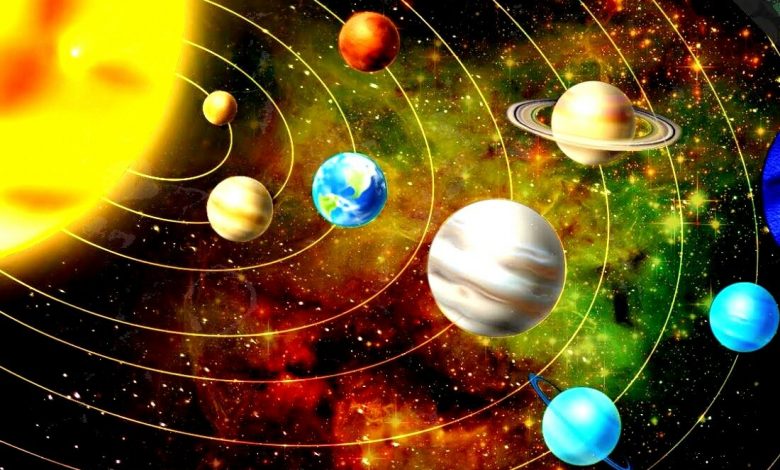
The modern heliocentric system of the world is a concept that asserts that the only star in our planetary system, the Sun, is the central point around which all celestial bodies revolve.
The heliocentric system of the world is the idea that the Sun is the center of the universe and the point around which all the planets revolve, including the Earth. This system assumes that our planet performs two types of motion: translational around the Sun and rotational around its axis.
Features of the heliocentric system of the world
It is possible to find a certain central point of the Universe only if the Universe is limited. This is what it owes according to the heliocentric system of the world.
Also in this system, such a concept as external and internal planets arose. The latter included Mercury and Venus, tk. their orbits around the sun must always be inside the orbit of the earth.
The most important feature of heliocentrism is the annual parallaxes of the stars. This effect manifests itself as a change in the apparent coordinates of the star.
Heliocentrism in antiquity and the middle ages
The idea that the Earth moves around a certain center of the whole world originated in the minds of the ancient Greeks. So there were assumptions about the rotation of the Earth around its axis, as well as about the motion of Mars and Venus around the Sun, which revolves with them around our planet.
However, it is believed that the first heliocentric system of the world was outlined in the 3rd century BC. e. Aristarchus of Samos. He made two important conclusions:
- Most likely, our planet revolves around the sun. The reason for this is the size of the Sun, which is much larger than the size of the Earth. Data on the relative magnitudes of the Earth, Moon and Sun were obtained from Aristarchus’s own calculations.
- Due to the absence of visible annual parallaxes of stars, he suggested that the orbit of our planet is represented by a point relative to the distances to the stars.
However, the ideas of Aristarchus did not become widespread in antiquity. The most famous version of the geocentric system in ancient Greece was the so-called theory of homocentric spheres, developed by the astronomers Eudoxus, Callippus and Aristotle.
Scientific revolution of Nicolaus Copernicus
From the very beginning of the centuries, scientists and ordinary people considered the Earth to be the center of the Universe.
It was in it that the heliocentric system of Copernicus was first presented.
The scientist confirmed the theory with physical calculations based on the physical mechanics of that time. He substantiated the following facts:
- the movement of the sun is explained by the fact that our planet rotates around an axis;
- explained the existence of equinoxes as a consequence of the periodic displacement of the planetary axis;
- the scientist was able to explain why the visible dimensions of celestial bodies and their brilliance (Sun, Moon, stars) change;
- gave an approximate estimate of the distances in our system, determined the approximate sizes of the planets, the sun;
- Copernicus laid the view of the orbits of the planets in the solar system;
determined that the planet Mercury has a rotation cycle around a central point equal to 88 days.
Followers of Copernicus
The supporters of the heliocentric theory of Nicolaus Copernicus in the 16th and 17th centuries were:
- Giordano Bruno;
- Galileo Galilei.
The Italian philosopher and poet Giordano Bruno said that the firmament does not consist only of celestial spheres. In his opinion, there were other luminaries with the characteristics of the Sun. Revolutionary convictions cost Giordano Bruno his life. At the age of 52, the Inquisition sentenced him to death by burning.
Galileo Galilei, an astronomer, physicist and mechanic from Italy, sought to develop the theory of Copernicus, and made scientific observations. This scientist believed that the Earth was never in the region located between Venus (Mercury) and the Sun. Like Giordano Bruno, Galileo fell victim to the Inquisition.
Features and differences from other systems
The term “heliocentrism” originated from the Greek language. The heliocentric system is based on the following concepts:
- The universe is not unlimited, which makes it possible to find its center.
- The planets are represented by external and internal space objects. The second variety includes Mercury and Venus (the orbits of these celestial bodies around the Sun are inside the earth’s orbit).
- Another important feature is the theory of annual parallaxes of stars, the essence of which is the apparent change in their coordinates. They arise as a result of a change in the position of astronomers due to the natural movement of the Earth around the Sun.
Heliocentrism is usually considered as the opposite of Ptolemy’s geocentric system, which arose in the era of antiquity, and subsequently received universal recognition. Unlike the theory under consideration, such a doctrine considered the immovable Earth as the center of the Universe. The rest of the celestial bodies, including the Sun, had to revolve around it.
Assumptions about the mobility of the Earth and its revolution around a certain center arose even before our era. Many scientists of the ancient era put forward similar theories, which subsequently aroused the interest of the most daring representatives of science.